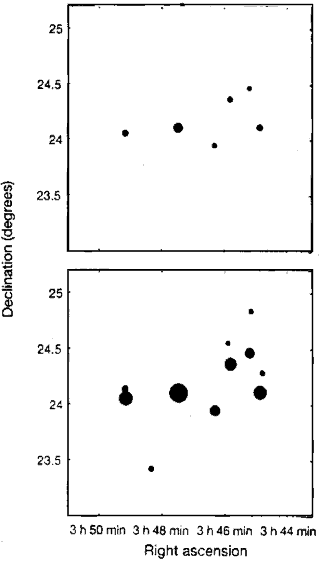 |
Science Frontiers ONLINE No. 128: MAR-APR 2000 |
|
|
Archeometeorology
|
Farmer-astronomers in the drought-prone regions of the Andes learned how, after what must have been centuries of sky-watching, to wring rainfall predictions from observations of the Pleiades. This information allowed them to better time the planting of potatoes -- their most important crop.
The astronomical phenomenon they employed is far from obvious. The Pleiades are a cluster of bright stars in the constellation Taurus. The visibility of these stars varies slightly depending upon the amount of subvisual cirrus. If the Pleiades were dull in the month of June, the Andean farmers knew from experience that an El Nino was on the way. This betokened reduced rainfall and told them to postpone the planting of their potatoes by 4-6 weeks for best yields.
The critical observations were made between June 13 and 24, when the Pleiades shine brightly just before dawn over the northeastern horizon. At this low angle, the presence of the subvisual cirrus has an obvious effect on the brightness of the stars in the cluster, as indicated in the figure. Some of the lesser stars seem to disappear altogether.
The visibility effect itself is rather subtle. It is remarkable enough that it was noticed at all by ancient peoples, much more so was their making the obscure connection to future weather.
(Orlove, Benjamin S., et al; "Forecasting Andean Rainfall and Crop Yield from the Influence of El Nino on Pleiades Visibility," Nature, 403:68, 2000.)
Comment. To the ancients, the Pleiades were known as the "seven sisters," be-cause their eyes registered seven resplendent stars. But today a naked-eye observer counts just six. What happened to the "Lost Pleiad?" Apparently it faded away in historical times. Details in AOF28 in Stars, Galaxies, Cosmos.
Other Sites of Interest
|
